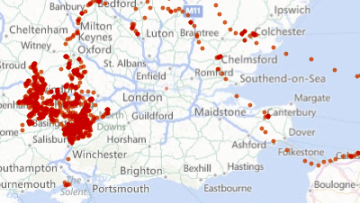Enhancement of propagation in reaction-diffusion equations by a line of fast diffusion
Abstract
we study a new mechanism of reaction-diffusion involving a line with fast diffusion, proposed to model the influence of transportation networks on biological invasions.
We will be interested in the existence and uniqueness of traveling waves solutions, and especially focus on their velocity. We will show that it grows as the square root of the diffusivity on the line, generalizing and showing the robustness of a result by Berestycki, Roquejoffre and Rossi (2013), and provide a characterization of the growth ratio thanks to an hypoelliptic (a priori) degenerate system.
Finally we will take a look at the dynamics and show that the waves attract a large class of initial data. In particular, we will shed light on a new mechanism of attraction which enables the waves to attract initial data with size independent of the diffusion on the line : this is a new result, in the sense than usually, enhancement of propagation has to be paid by strengthening the assumptions on the size of the initial data for invasion to happen.




